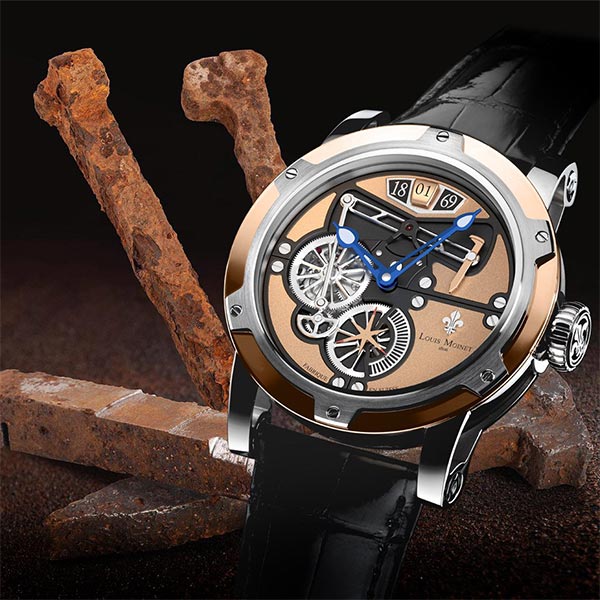These days, a watch has to be precise, sometimes extremely precise. Why? No one really knows. It probably has something to do with elegant engineering and horological research. But if we’re honest, the fact that a watch might lose a few seconds each day has exactly zero effect on the day in question! Our smartphones, which everyone consults when they need to know the time, don’t even show seconds, and as far as I’m aware there has been no great outcry.
But attitudes haven’t always been so relaxed. In centuries past, the quest for precision to the second was of paramount importance. In the 18th century, when the great seafaring nations, primarily England and France, were competing to accurately measure longitude, it was because a handful of seconds either way could result in navigation errors of dozens of nautical miles, which could lead to entire days wasted.
Four minutes, nine deaths
In the early 19th century, timekeeping precision became vital once again. This time the application was not on sea but on land, where the railway timetables had to be synchronised. The potentially terrible consequences of a lack of punctuality were forcibly brought home to watchmakers on 19 April 1891 in Cleveland, Ohio, when two trains collided head-on. The reason for the collision was that one of the drivers did not have the correct time, and started down the track before the previous train had had time to clear it. His watch was four minutes slow. He thought he had seven minutes to reach the next junction, but in fact he had only three. Nine people died.
A defining event
This tragic event is generally seen as the trigger for the creation of the “railroad watch”, a professional watch for the use of train drivers. In fact, it was one of the very first professional watches, and a distant precursor of the diving watches and military models that emerged during the Second World War, some 50 years later. Even today, few people are aware of the railroad watch’s status as the world’s first tool watch.
The birth of the “RR watch”
Many brands weighed in on the creation of pocket watches that could be stamped with “RR” for railroad, denoting a certain level of precision. In fact, it was a jeweller based in Cleveland that became the first person to lay down a stringent set of guidelines. In 1891, Webster Clay Ball started the Ball Watch Company, a brand that still exists today. His criteria included accuracy to within 30 seconds per week – the equivalent of four seconds per day, which was quite a feat for the time. Another requirement was that the watch be inspected every two weeks by a qualified watchmaker.
The guidelines served their purpose. On 19 July 1891, the head of the Great Lakes railway appointed Webb C. Ball as Chief Time Inspector. His inspection system formed the basis of the vast Ball network, which would eventually cover 75% of North America’s railways, or over 280,000 km of track.
A human and technological achievement
No fewer than 37 brands were declared in compliance with the guidelines, including Hamilton, Longines, IWC, Omega and Zenith, as well as American brands Elgin and Waltham, since vanished.

Today, Ateliers Louis Moinet is reinventing the format with a subscription-based limited series to commemorate the 150th anniversary of the first transcontinental railroad in the US, linking the Atlantic and Pacific coasts. It was opened after a six-year effort to cross the Sierra Nevada, avoiding Death Valley, and skirting around the mountains of Yosemite and the canyons and rapids of Missouri. East and West shook hands when the final rail was laid at Promontory Summit on 10 May 1869. To symbolise the event, a Golden Spike was driven in (later replaced by a regular steel crampon). Today, the Golden Spike is carefully preserved at the Stanford University museum in California.
Louis Moinet’s reinvention
Louis Moinet, the inventor of the chronograph, is now unveiling the Transcontinental. An ingenious automaton has been designed to reproduce the coupling rods used by the Jupiter and 119, the two locomotives that met on Promontory Summit in 1869. The rods are connected to the famous Golden Spike, which animates the centre of the piece with its up-and-down motion, recalling the thousands of crampons that were driven into the ground along the route. Hours and minutes are read from the centre of the watch, with the seconds in a subdial at 6 o’clock, suggesting the front of a locomotive. To commemorate the year 1869, there will be 18 watches in 18K rose gold, and a further 69 in two-tone steel and 18K rose gold.





